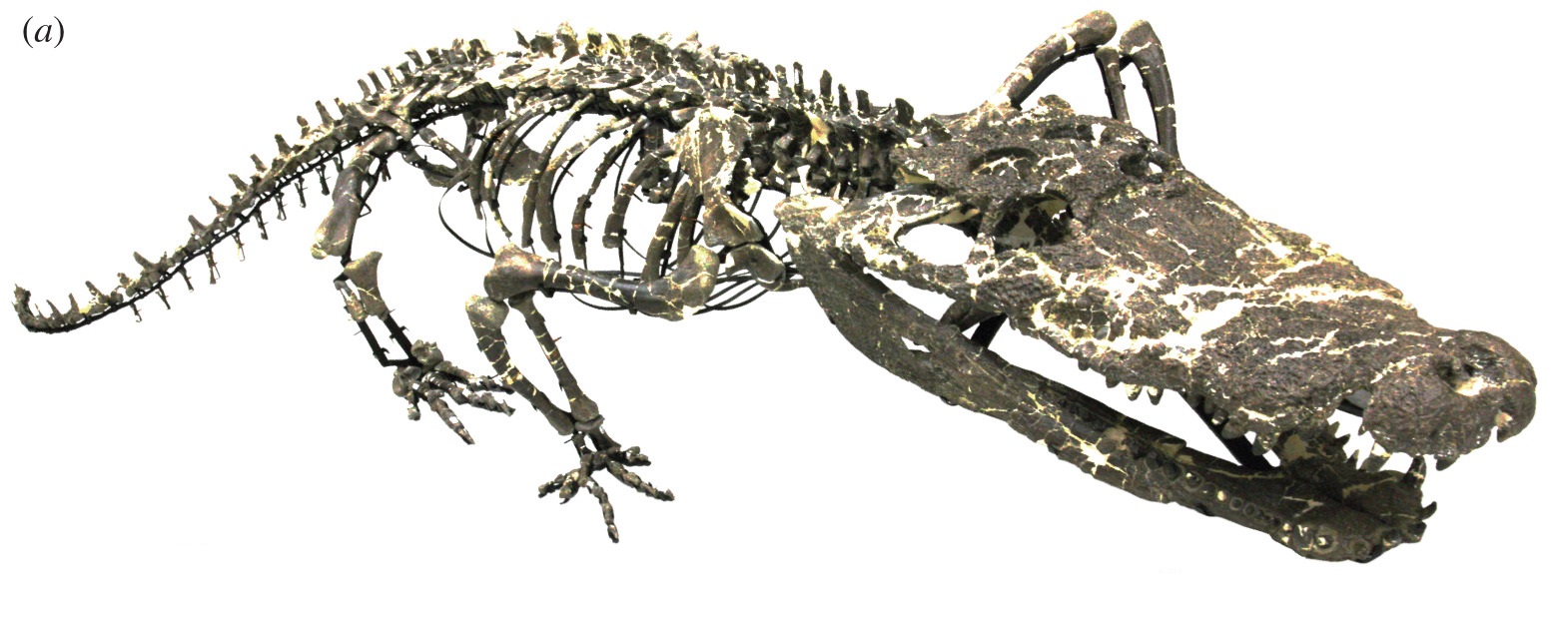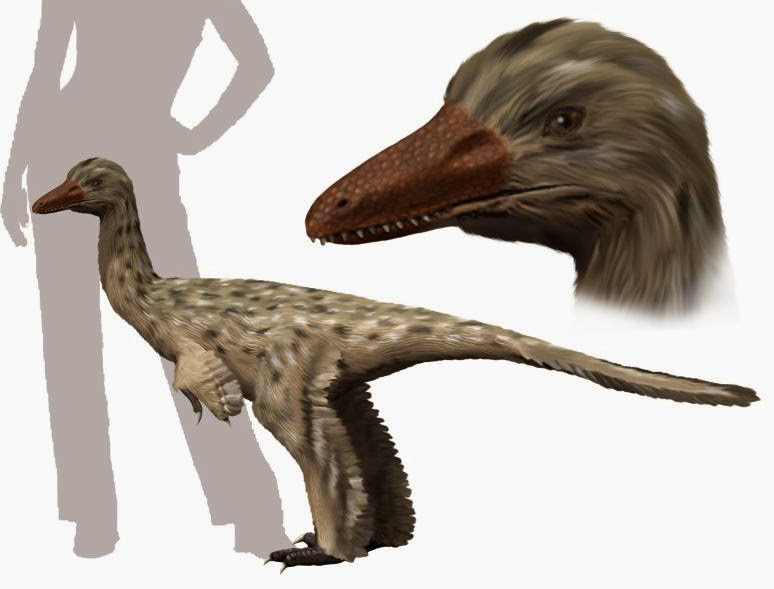|
Tamarro
''Tamarro'' (named after a mythological creature in local culture) is a genus of troodontid theropod from the Late Cretaceous Talarn Formation (Tremp Group) of Spain. The genus contains a single species, ''Tamarro insperatus'', known from a partial metatarsal described in 2021. Discovery and naming The holotype of ''Tamarro'', MCD-7073, a metatarsal, was found in 2003 at the Sant Romà d'Abella site, belonging to the Talarn Formation of the Tremp Group. In 2021, Sellés ''et al.'' described it as a new genus and species, ''Tamarro insperatus''; the generic name is that of a small creature in the folklore of Pallars, Spain, while the specific name means "unexpected", referring to the unexpected discovery of the fossil. Classification Sellés ''et al.'' placed ''Tamarro'' in the Jinfengopteryginae, making it the first member of the subfamily from Europe. They also suggested that its ancestors migrated from Asia to Europe sometime between the Cenomanian and the Maastrichtian. ... [...More Info...] [...Related Items...] OR: [Wikipedia] [Google] [Baidu] |
Tamarro Restoration
''Tamarro'' (named after a mythological creature in local culture) is a genus of troodontid theropod from the Late Cretaceous Talarn Formation (Tremp Group) of Spain. The genus contains a single species, ''Tamarro insperatus'', known from a partial metatarsal described in 2021. Discovery and naming The holotype of ''Tamarro'', MCD-7073, a metatarsal, was found in 2003 at the Sant Romà d'Abella site, belonging to the Talarn Formation of the Tremp Group. In 2021, Sellés ''et al.'' described it as a new genus and species, ''Tamarro insperatus''; the generic name is that of a small creature in the folklore of Pallars, Spain, while the specific name means "unexpected", referring to the unexpected discovery of the fossil. Classification Sellés ''et al.'' placed ''Tamarro'' in the Jinfengopteryginae, making it the first member of the subfamily from Europe. They also suggested that its ancestors migrated from Asia to Europe sometime between the Cenomanian and the Maastrichtian. ... [...More Info...] [...Related Items...] OR: [Wikipedia] [Google] [Baidu] |
Jinfengopteryginae
Jinfengopteryginae is a subfamily of bird-like theropod dinosaurs known from the Cretaceous of Eurasia. This group includes relatively few genera, with members discovered in 2005 but the name erected in 2012. Like other troodontids, this group of dinosaurs resided in the Paraves potentially close to the Avialae. Description Jinfengopterygines were relatively small sized troodontids ranging from about 0.5–2 m (1.8–6.6 ft), and like other troodontids had a pair of sickle claws on each foot. These animals were feathered, as most troodontids presumably were, as shown in the type species, with typical feathering around the body and neck and especially long, vaned feathers spanning the tail. Studies on these animals' flight capabilities have determined that they would be approximately as proficient as ''Microraptor'' and '' Rahonavis''. Although most other troodontids are believed to be primarily carnivorous, specimens of this subfamily show potential omnivory, being what ar ... [...More Info...] [...Related Items...] OR: [Wikipedia] [Google] [Baidu] |
2021 In Archosaur Paleontology
This article records new taxa of fossil archosaurs of every kind that was binomial nomenclature, described during the year 2021, as well as other significant discoveries and events related to paleontology of archosaurs that occurred in 2021. Pseudosuchians New pseudosuchian taxa General pseudosuchian research * A study on the phylogenetic relationships of pseudosuchian archosaurs, aiming to determine drivers of body size evolution in this group, is published by Stockdale & Michael Benton, Benton (2021); the study is subsequently criticized by Benson ''et al.'' (2022). * The first occurrence of the track type ''"Chirotherium" lulli'' (inferred to be produced by a pseudosuchian archosaur) from western North America is reported from the Owl Rock Member of the Chinle Formation (Utah, United States) by Milner ''et al.'' (2021). * A study on the skeletal anatomy and phylogenetic relationships of ''Revueltosaurus callenderi'' is published by Parker ''et al.'' (2021). * A study on ... [...More Info...] [...Related Items...] OR: [Wikipedia] [Google] [Baidu] |
Tremp Formation
The Tremp Formation (, ), alternatively described as Tremp Group (), is a geological Formation (geology), formation in the comarca Pallars Jussà, Lleida Province, Lleida, Spain. The formation is restricted to the Tremp-Graus Basin, Tremp or Tremp-Graus Basin (), a piggyback basin, piggyback foreland basin in the Catalonian Pre-Pyrenees. The formation dates to the Maastrichtian to Thanetian,Pujalte & Schmitz, 2005, p.82 thus the formation includes the Cretaceous-Paleogene boundary that has been well studied in the area, using paleomagnetism and carbon and oxygen isotopes. The formation comprises several lithologies, from sandstone, conglomerate (geology), conglomerates and shales to marls, siltstones, limestones and lignite and gypsum beds and ranges between in thickness. The Tremp Formation was deposited in a continental to marginally marine fluvial-lacustrine environment characterized by estuary, estuarine to river delta, deltaic settings. The Tremp Basin evolved into a sedi ... [...More Info...] [...Related Items...] OR: [Wikipedia] [Google] [Baidu] |
Tremp Group
The Tremp Formation (, ), alternatively described as Tremp Group (), is a geological formation in the comarca Pallars Jussà, Lleida, Spain. The formation is restricted to the Tremp or Tremp-Graus Basin (), a piggyback foreland basin in the Catalonian Pre-Pyrenees. The formation dates to the Maastrichtian to Thanetian,Pujalte & Schmitz, 2005, p.82 thus the formation includes the Cretaceous-Paleogene boundary that has been well studied in the area, using paleomagnetism and carbon and oxygen isotopes. The formation comprises several lithologies, from sandstone, conglomerates and shales to marls, siltstones, limestones and lignite and gypsum beds and ranges between in thickness. The Tremp Formation was deposited in a continental to marginally marine fluvial-lacustrine environment characterized by estuary, estuarine to river delta, deltaic settings. The Tremp Basin evolved into a sedimentary depression with the break-up of Pangea and the spreading of the North American plate, ... [...More Info...] [...Related Items...] OR: [Wikipedia] [Google] [Baidu] |
Calvarius
''Calvarius'' (meaning "suffering") is an extinct genus of styracosternan ornithopod from the Late Cretaceous (Maastrichtian age) Talarn Formation of Spain. The genus contains a single species, ''Calvarius rapidus'', known from a single . The slender morphology of this bone may indicate ''Calvarius'' had a cursorial (adapted to run) ecology, in contrast to its slower-moving relatives. Discovery and naming The holotype specimen, MCD-8734, is a single fourth discovered in 2019 in layers of the Talarn Formation ('Pallars Jussà' locality, Tremp Group) in Catalonia, Spain. In 2023, Albert Prieto-Márquez and Albert Sellés described ''Calvarius rapidus'' as a new genus of styracosternan dinosaurs based on this specimen. The genus name, "''Calvarius''", refers to the type locality, Serrat del Calvari. It is further derived from the Catalan ''calvari'', meaning "suffering", referencing proximity of the genus to the K-Pg extinction event. The specific name, "''rapidus''", is a ... [...More Info...] [...Related Items...] OR: [Wikipedia] [Google] [Baidu] |
Troodontinae
Troodontidae is a clade of bird-like theropod dinosaurs from the Late Jurassic to Late Cretaceous. During most of the 20th century, troodontid fossils were few and incomplete and they have therefore been allied, at various times, with many dinosaurian lineages. More recent fossil discoveries of complete and articulated specimens (including specimens which preserve feathers, eggs, embryos, and complete juveniles), have helped to increase understanding about this group. Anatomical studies, particularly studies of the most primitive troodontids, like ''Sinovenator'', demonstrate striking anatomical similarities with ''Archaeopteryx'' and primitive dromaeosaurids, and demonstrate that they are relatives comprising a clade called Paraves. Evolution The oldest definitive troodontid known is ''Hesperornithoides'' from the Late Jurassic of Wyoming. The slightly older '' Koparion'' of Utah is only represented by a single tooth, and small maniraptoran teeth from the Middle Jurassic of En ... [...More Info...] [...Related Items...] OR: [Wikipedia] [Google] [Baidu] |
Daliansaurus
''Daliansaurus'' (meaning "Dalian reptile") is a genus of small troodontid theropod dinosaur, measuring approximately long, from the Early Cretaceous of China. It contains a single species, ''D. liaoningensis'', named in 2017 by Shen and colleagues from a nearly complete skeleton preserved in three dimensions. ''Daliansaurus'' is unusual in possessing an enlarged claw on the fourth digit of the foot, in addition to the "sickle claw" found on the second digit of the feet of most paravians. It also has long metatarsal bones, and apparently possesses bird-like uncinate processes (a first among troodontids). In the Lujiatun Beds of the Yixian Formation, a volcanically-influenced region with a cold climate, ''Daliansaurus'' lived alongside its closest relatives - '' Sinovenator'', '' Sinusonasus'', and '' Mei'', with which it forms the group Sinovenatorinae. Description ''Daliansaurus'' is a small, lightly-built, and most likely feathered troodontid measuring approximately in leng ... [...More Info...] [...Related Items...] OR: [Wikipedia] [Google] [Baidu] |
Gobivenator
''Gobivenator'' is an extinct genus of troodontid theropod dinosaur known from the late Campanian Djadokhta Formation of central Gobi Desert, Mongolia. It contains a single species, ''Gobivenator mongoliensis''. ''G. mongoliensis'' is known from a single individual, which represents the most complete specimen of a Late Cretaceous troodontid currently known. Discovery ''Gobivenator'' was first described and named by Takanobu Tsuihiji, Rinchen Barsbold, Mahito Watabe, Khishigjav Tsogtbaatar, Tsogtbaatar Chinzorig, Yoshito Fujiyama and Shigeru Suzuki in 2014 and the type species is ''Gobivenator mongoliensis''. The generic name is derived from the name of the Gobi Desert, where the holotype was found, and ''venator'' meaning "hunter" in Latin. The specific name refers to its occurrence in Mongolia, as the Latin suffix ''-ensis'' means "from". ''Gobivenator'' is known solely from the holotype MPC-D 100/86, a nearly complete and articulated skeleton including the skull, housed at the ... [...More Info...] [...Related Items...] OR: [Wikipedia] [Google] [Baidu] |





